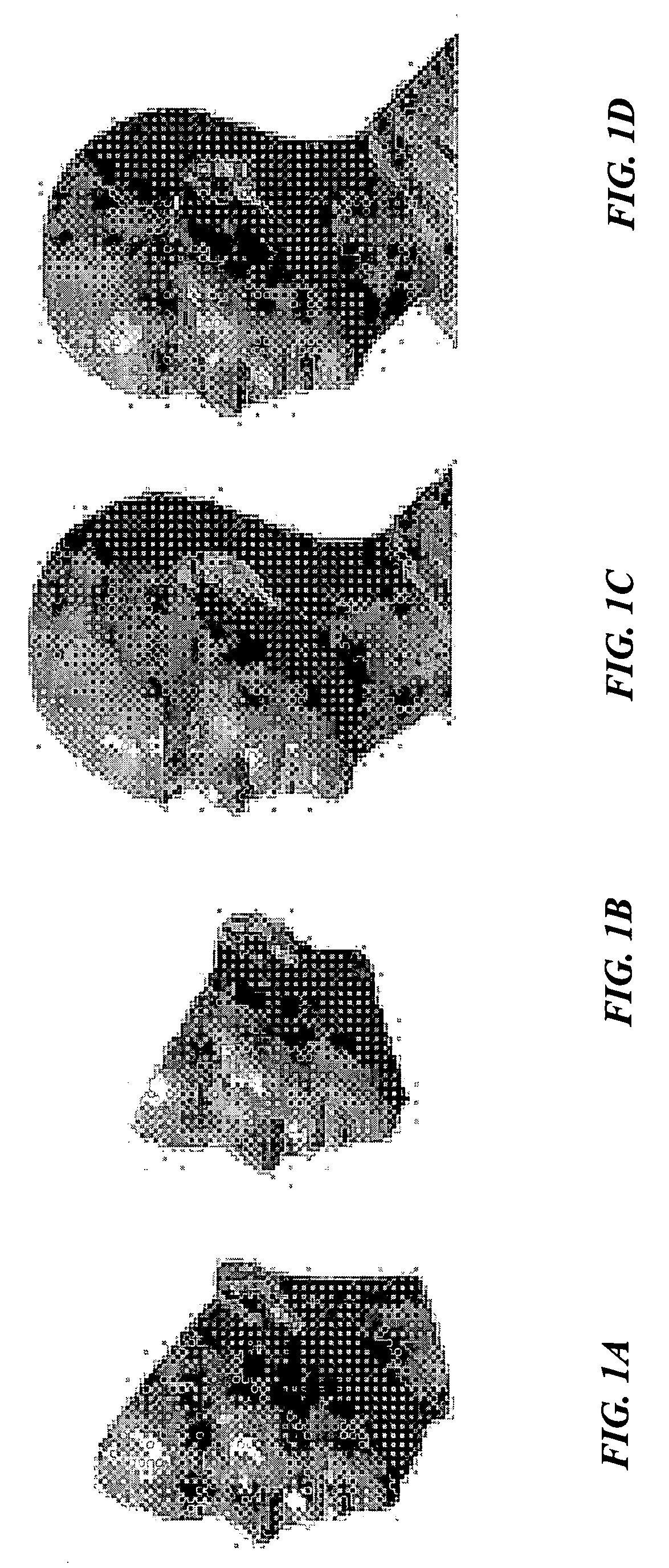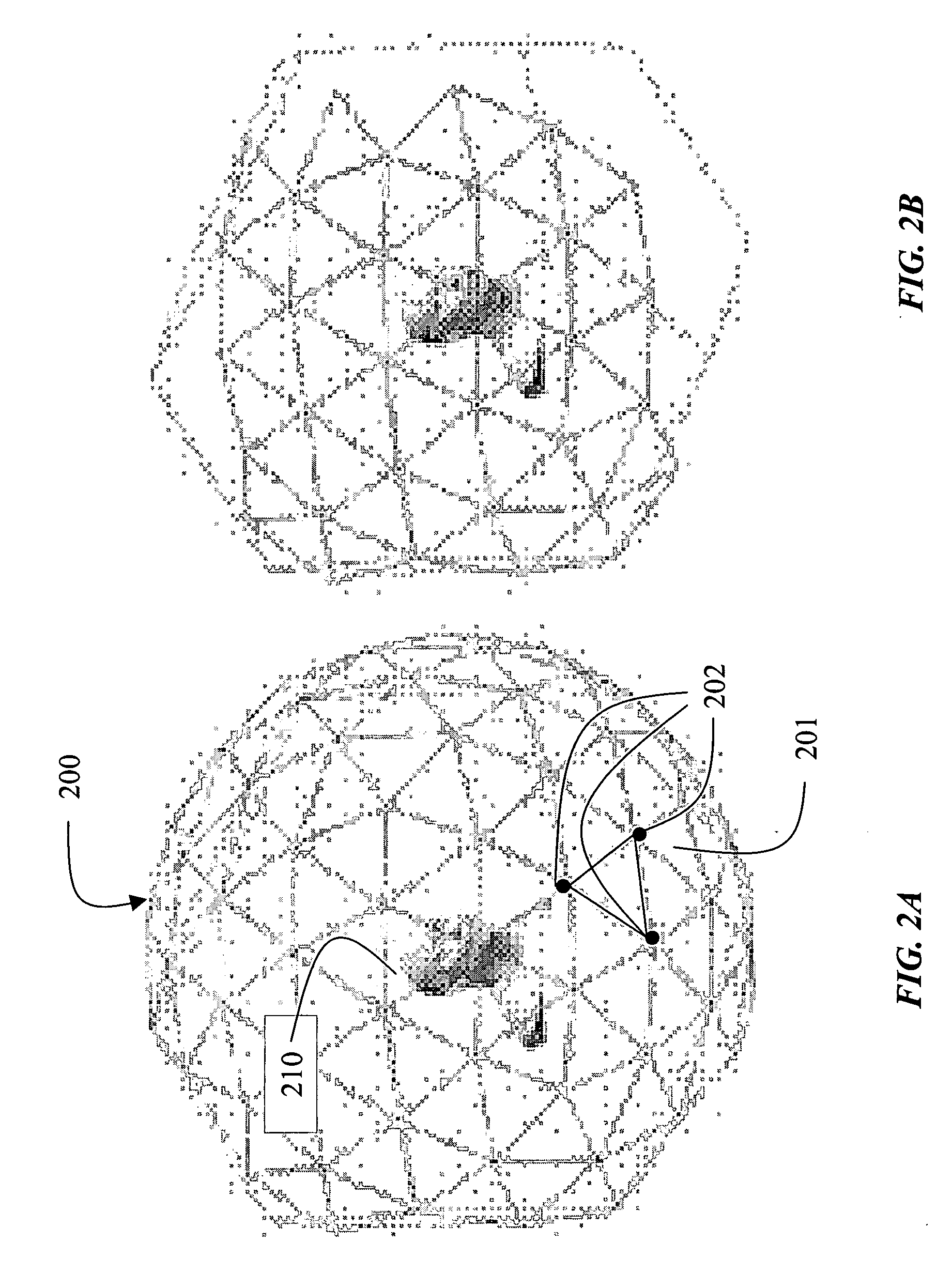Method for determining optimal viewpoints for 3D face modeling and face recognition
- Summary
- Abstract
- Description
- Claims
- Application Information
AI Technical Summary
Benefits of technology
Problems solved by technology
Method used
Image
Examples
Embodiment Construction
Multi-View 3D Face Modeling
Our present invention provides a method for determining an optimal set of viewpoints required to construct an accurate 3D model of a human face acquired from 2D images taken from the set of viewpoints. Our general method for constructing the 3D model is described in U.S. patent application Ser. No. 10 / 636,355 “Reconstructing Heads from 3D Models and 2D Silhouettes,” filed on Aug. 7, 2003, by Lee et al, incorporate herein by reference.
As shown in FIG. 6, our method uses an arrangement of many cameras 600, e.g., eleven, placed on ‘view-sphere”200 around a person's head 210. The placement of the cameras determines the size of the portion of the head that is modeled. In actual practice, the view-sphere is constructed as a geodesic dome with the cameras fitted to the structural members of the dome. The person sits inside the dome on a chair while images are acquired of the person's face. The face 210 is at an approximate center of the view-sphere 200.
As ...
PUM
 Login to View More
Login to View More Abstract
Description
Claims
Application Information
 Login to View More
Login to View More - R&D
- Intellectual Property
- Life Sciences
- Materials
- Tech Scout
- Unparalleled Data Quality
- Higher Quality Content
- 60% Fewer Hallucinations
Browse by: Latest US Patents, China's latest patents, Technical Efficacy Thesaurus, Application Domain, Technology Topic, Popular Technical Reports.
© 2025 PatSnap. All rights reserved.Legal|Privacy policy|Modern Slavery Act Transparency Statement|Sitemap|About US| Contact US: help@patsnap.com



